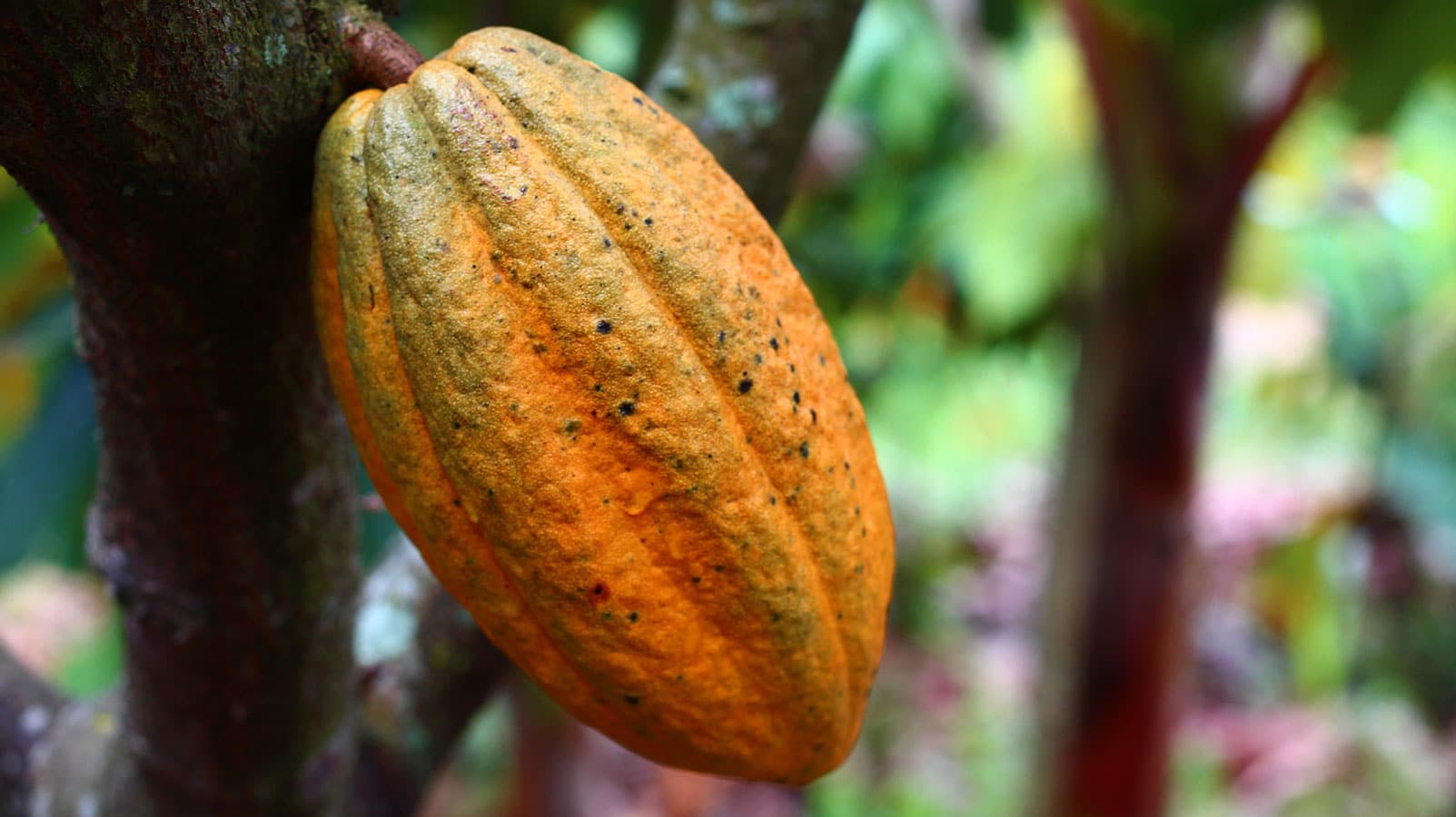What versatile tropical plant not only makes possible chocolate treats and drinks, but also serves as an ingredient for bread, soaps, livestock feed, butter, cream, and even wine? The answer is cocoa, a native of South America introduced to Africa by colonialists in the late 1800s. Cocoa cultivation is on the rise on much of the African continent, with the exception of Nigeria in spite of growing global consumption. To make matters worse, the industry is under fire for exploiting child labor. Can technology turn things around, for the sake of Nigeria’s children and for the livelihoods of its smallholder farmers? On that second point, a team of scientists from two Nigerian universities are arguing that yes, technology can indeed help revive cocoa cultivation in Africa’s largest economy and raise standards of living on rural farms. On the first point—whether technology can help in the battle against child labor—that remains an open question.
Africa today produces most of the world’s cocoa, and Nigeria used to be the second largest producing nation. It is still in the top five, but Nigeria may be the only country where the crop is on the decline. According to the International Cocoa Organization, Nigeria produced almost 390,000 tons annually from 2000 to 2010. Yet by 2017 production had fallen by 40% to around 230,000 tons. News of the collapse in cocoa production in Nigeria was followed by fresh allegations of child labor abuses by the industry, a concern lingering since at least the late 1990s. This time allegations were not only leveled by NGOs, but also confirmed by both the International Labor Organization and the U.S. Department of Labor (DOL). Critics say the blame lies with major purchasers like Nestle and with the Nigerian government. Laws intended to guard against such abuses are in place, but enforcement has been lax. A 2018 DOL report says the situation has improved somewhat, but the problem is far from resolved. Nigeria’s government has been keen to help the cocoa industry recover, a goal made pertinent by the collapse in oil prices and the need for Nigeria to better diversify its economy and exports. But how should policymakers best respond?
Four agricultural scientists from Samuel Adegboyega University and Obafemi Awolowo University set off for Kogi State in central Nigeria to find out. Their research focused on a set of five technologies and practices, including “planting hybrid cocoa varieties, weed control, control of black pod disease with fungicides, fertilizer application, and control of capsids with insecticides,” as they reported. These scientists wanted to determine if there was any correlation between the relative productivity of smallholder cocoa farmers in Kogi and the extent to which farmers employed technology. In other words, did farmers who more regularly and judiciously practice fertilization, pest and disease control, and other technological interventions grow more cocoa per hectare of land than farmers who relied less on these methods? Writing in the International Journal of Agriculture Innovation, Technology and Globalisation, the researchers said their results convincingly show the answer is a resounding “yes”. In fact, they found a strong positive correlation between technology and cocoa farm productivity.
Why are these findings important? As the team mentioned in their study, past research concluded that the best way for a nation to boost cocoa production is to increase the area of land under cultivation, not by better managing existing cultivated hectares. That implies more deforestation for the sake of expanding cocoa farming. But the research team returning from Kogi declared that this isn’t necessarily the case. “Production technologies have led to quality of output and improved farm practices,” they concluded. “Farmers should strive more to improve on these technologies. Where there is inadequate enabling environment for farmers, the possibility of reduction of cocoa product is inevitable”.
That’s fine for Kogi State, but what of other cocoa farming regions in Nigeria or beyond? Samuel Adegboyega University professor Sunday Olufemi Akintelu acknowledged that the focus solely on Kogi farms is one shortcoming of his team’s investigation, but it’s not for want of trying. “Currently we have not been able to access funding to enable us to expand the scope of the study beyond Kogi State,” he told Grow Further. “We also wish to carry out comparative studies on technologies used by both landowners and smallholder cocoa farmers”. Akintelu said he and his colleagues are still looking for money to expand their research.
Corporate funding for improving cocoa production is likely to prioritize eradicating child labor, not enhancing farm productivity. Responding to the latest charges of child labor abuse, Nestle published a 2019 “Tackling Child Labor” in cocoa plan. The company admitted to discovering at least 18,000 underage workers employed in dangerous practices on cocoa farms it works with, and vowed to crack down, with the aim of eradicating the problem by 2025. But this may be easier said than done. In the long term, higher labor productivity through technological progress may be the most effective way to reduce the number of children working on cocoa farms.
Grow Further is considering funding projects that improve productivity and reduce the demand for child labor.
–Grow Further




